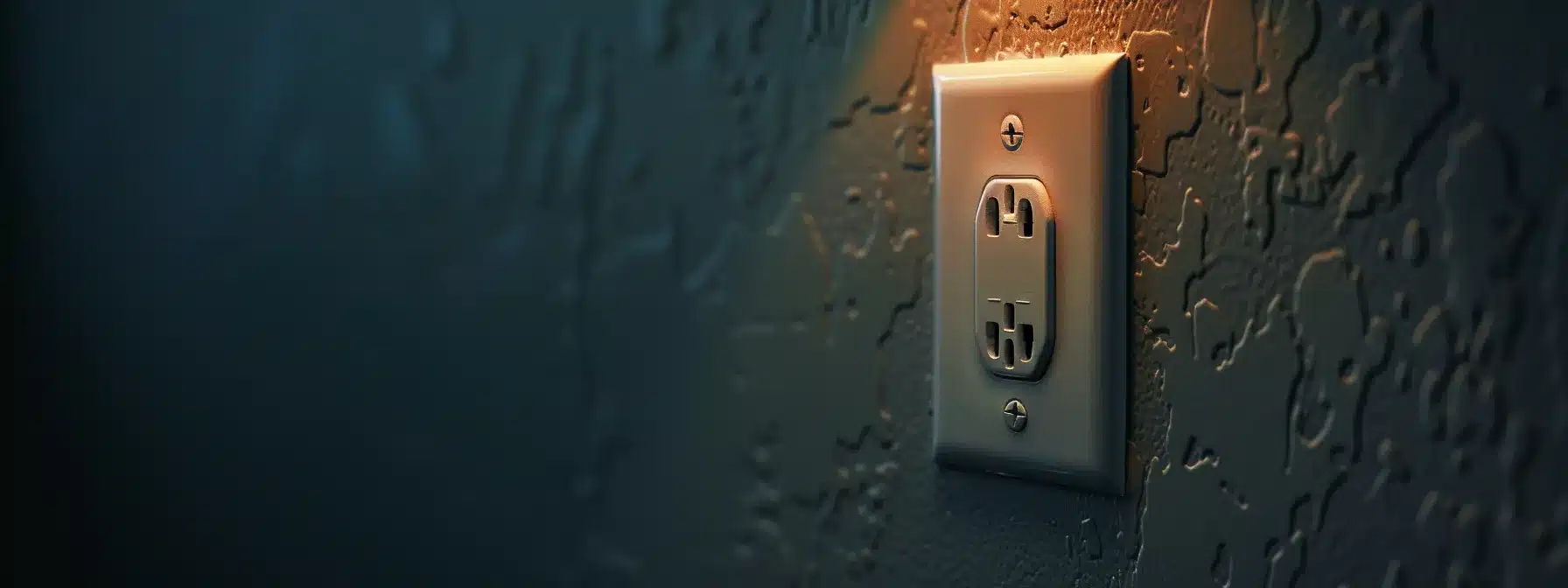Parents face a constant challenge in keeping their children safe from electrical hazards at home. From exposed outlets to tangled wires and overloaded power strips, potential dangers lurk in every room. As an emergency electrician, we often see the aftermath of accidents that could have been prevented with proper childproofing measures. In this article, we’ll explore essential steps to safeguard your home’s electrical system and protect your little ones from harm. Keep reading to discover practical tips and advanced solutions that will give you peace of mind as a parent.
Key Takeaways
- Childproofing electrical outlets and cords is crucial for protecting curious children from potential harm
- Regular inspections and maintenance of electrical systems help identify and prevent safety hazards
- Teaching children about electrical safety through age-appropriate methods reinforces protective measures
- Smart technologies and cordless appliances offer advanced solutions for electrical childproofing
- Staying informed about updated safety standards ensures ongoing protection as children grow and explore
Understanding the Risks: Why Childproofing Is Essential
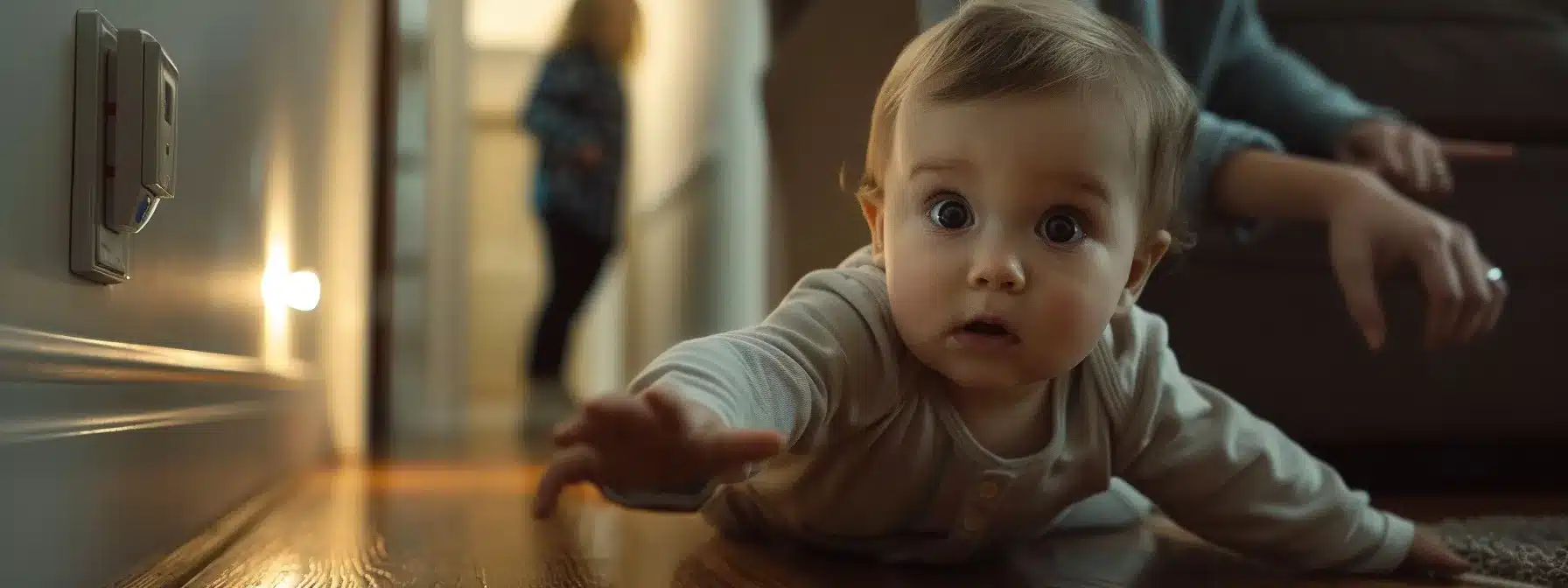
Childproofing electrical outlets and cords is crucial for protecting curious young ones from potential harm. As children explore their surroundings, they may encounter various electrical hazards, from exposed outlets to enticing extension cords. These seemingly harmless fixtures can lead to serious electrical injuries, especially for toddlers and preschoolers who are naturally inquisitive. Understanding the risks associated with electrical components in your home, such as those hidden behind baseboards or in plain sight, is the first step in creating a safer environment for your family. By identifying potential dangers and taking preventive measures, parents can significantly reduce the likelihood of electrical accidents and ensure their children’s well-being.
Identifying Potential Electrical Hazards in Your Home
Electrical hazards lurk in every room, often hiding in plain sight. Parents should scan their homes for exposed outlets, frayed power cords, and loose wiring that could lead to accidents. Metal objects near electrical sources pose extra risks. In case of any emergencies, it is important to have the contact information of an emergency electrician readily available.
Extension cords and surge protectors attract curious hands. Children might try to unplug devices or insert objects into outlets. Plastic outlet covers offer a simple solution, but some determined toddlers can remove them.
Don’t overlook less obvious dangers. Cords running under rugs or through doorways can trip family members. Exposed wiring in air ducts or behind loose faceplates invites exploration. Regular inspections help spot these hidden hazards before they cause harm.
The Statistics: How Electrical Outlets and Cords Harm Children
Electrical hazards pose a significant risk to children, with statistics revealing alarming trends. Each year, approximately 2,400 children suffer severe shock and burns from electrical outlet injuries. The small size of infants’ fingers and their natural curiosity make them particularly vulnerable to these dangers.
The length of exposed cords and the accessibility of outlets contribute to the risk factor. Studies show that children under 5 are at the highest risk, accounting for nearly 70% of electrical burn injuries treated in emergency rooms. Childproofing measures can drastically reduce these incidents.
Despite the prevalence of outlet covers, they’re not foolproof. A study found that 100% of 2 to 4-year-olds could remove plastic outlet caps within 10 seconds, highlighting the need for more robust childproofing solutions. This statistic underscores the importance of comprehensive electrical safety measures in homes with young children.
- Identify potential hazards in each room
- Install tamper-resistant outlets
- Use cord shorteners and covers
- Educate children about electrical safety
- Regularly inspect and maintain electrical systems
Age Groups Most at Risk and Why
Children aged 2 to 4 face the highest risk of electrical injuries due to their curiosity and developing motor skills. This age group often explores their environment by touching and tasting objects, increasing their chances of encountering electrical hazards. Parents must pay extra attention to childproofing efforts during this critical stage of development.
Toddlers between 12 and 24 months old also require vigilant safety measures. As they learn to walk and climb, they gain access to new areas of the home, including electrical outlets and cords. Installing tamper-resistant outlets and using cord covers can significantly reduce the risk of burns and shocks for these young explorers.
Older children, aged 5 to 7, may face different electrical dangers as they begin to use electronic devices independently. Teaching them about electrical safety, such as proper handling of cords and the importance of circuit breakers, becomes crucial. Encouraging them to avoid using metal objects near outlets and to never attempt to unscrew electrical fixtures can prevent accidents.
- Secure all accessible outlets with childproof covers
- Keep electrical cords out of reach or hidden
- Teach children about electrical safety from an early age
- Regularly inspect and maintain electrical systems
- Install ground fault circuit interrupters (GFCIs) in high-risk areas
Safety doesn’t stop at awareness; action is key. Let’s dive into the practical steps that transform your home into a child-friendly haven.
Starting With the Basics: Simple Steps for Childproofing Outlets
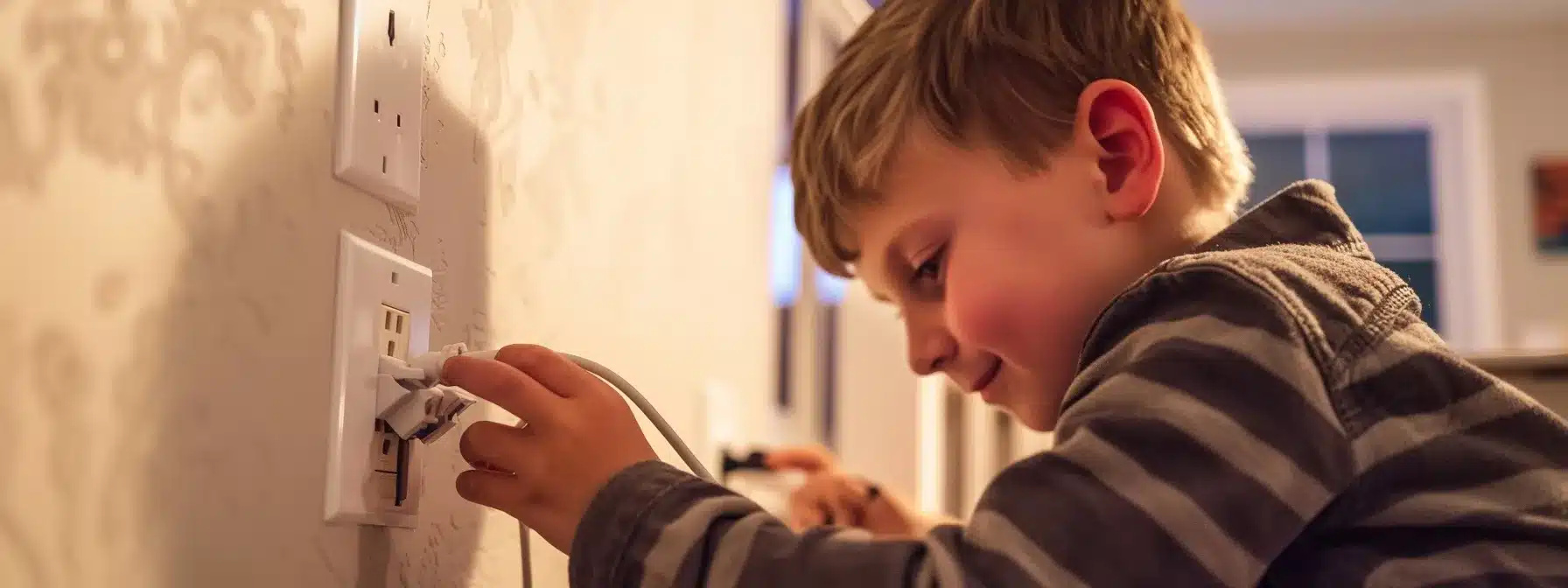
Childproofing electrical outlets forms the foundation of a safe home environment for curious little ones. With the right approach, parents can effectively shield their children from potential electrical hazards. This process involves selecting appropriate outlet covers, understanding proper installation techniques, and regularly testing the effectiveness of these safety measures. By considering factors such as voltage, power supply, and electrical wiring standards set by the National Fire Protection Association, families can make informed decisions about outlet protection. Choosing a reputable brand and following installation guidelines ensures that these safety devices work as intended, providing peace of mind for parents and a secure exploration space for children.
Choosing the Right Outlet Covers for Your Home
Selecting the right outlet covers is crucial for protecting children from electric current hazards. Parents should consider tamper-resistant receptacles that meet National Electrical Code standards. These devices feature spring-loaded shutters that close off the contact openings, preventing object insertion.
For existing outlets, sliding plate covers offer a practical solution. They automatically close when not in use, reducing the risk of accidental contact with live electrical components. In case of emergency, adults can easily access the outlet by sliding the cover to the side.
Box-style covers provide an additional layer of protection for outlets in high-traffic areas. These covers encase the entire outlet and cord, preventing children from unplugging devices or accessing exposed prongs. When selecting covers, consider their durability and ease of use to ensure consistent energy safety:
The Installation Process: A Step-by-Step Guide
Installing childproof outlet covers begins with selecting the appropriate type for your home’s needs. Homeowners should turn off the power to the outlet at the circuit breaker before starting any installation process. For plug-in covers, simply insert them into the outlet, ensuring a snug fit.
Sliding plate covers require more effort but offer better protection. Remove the existing outlet plate, align the new cover, and secure it with the provided screws. Test the sliding mechanism to ensure smooth operation and proper closure when not in use.
For tamper-resistant receptacles, a licensed electrician should handle the installation. These built-in safety features replace the entire outlet, providing permanent protection against curious fingers and foreign objects. After installation, test all covers and receptacles to confirm proper function and safety:
Testing Outlet Covers for Effectiveness and Durability
Testing outlet covers ensures they provide reliable protection for curious children. Parents should regularly check the fit and function of installed covers, ensuring they remain secure and difficult for little hands to remove. A simple tug test can reveal loose or worn covers that need replacement.
Durability plays a crucial role in the long-term effectiveness of outlet protection. Exposing covers to various household conditions, such as temperature changes and cleaning products, can help assess their resilience. Covers that withstand daily wear and tear without cracking or losing their grip offer the best defense against electrical hazards.
To thoroughly evaluate outlet covers, parents can conduct a series of practical tests. These assessments help identify potential weaknesses and ensure optimal safety for children:
- Attempt to remove covers using common household objects
- Check for any gaps between the cover and outlet face
- Test sliding mechanisms for smooth operation
- Verify that box-style covers securely encase plugged-in cords
- Expose covers to cleaning solutions to check for material degradation
Childproofing outlets marks just the beginning of your home safety journey. Now, let’s tackle another critical aspect: managing those pesky cords that tempt little hands.
Managing Cords: Tips to Keep Them Out of Reach
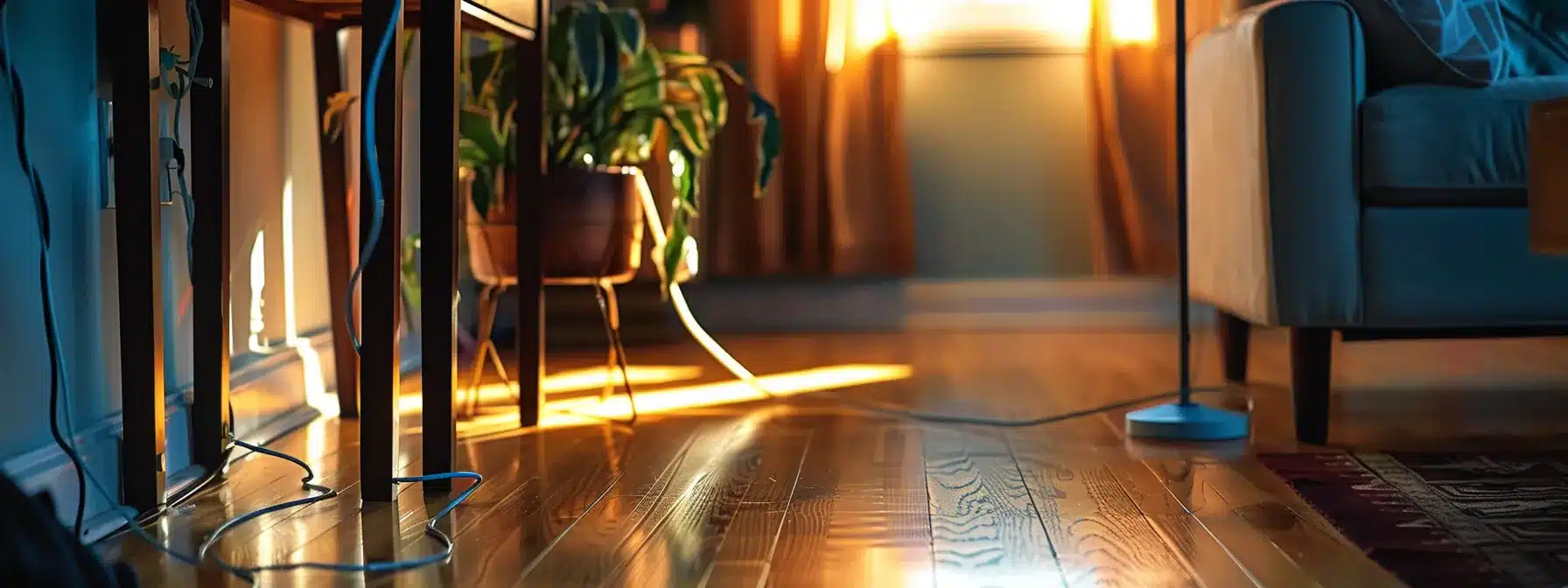
Electrical cords pose a significant risk to children’s safety, often tempting little hands to tug, chew, or play with them. Managing these cords effectively is crucial in creating a child-safe environment. By implementing smart organization techniques, utilizing specialized tools, and conducting regular inspections, parents can significantly reduce the hazards associated with exposed electrical cords. This comprehensive approach not only enhances safety but also contributes to a neater, more organized living space. Let’s explore practical strategies to keep cords out of reach and maintain a secure home for curious explorers.
Organizing and Hiding Electrical Cords Effectively
Homeowners can effectively organize and conceal electrical cords by using cord management systems. These include adhesive clips, cable ties, and wire channels that secure cords along baseboards or furniture edges. Bundling multiple cords together with spiral wrap or flexible tubing creates a neater appearance and reduces tripping hazards.
Furniture arrangement plays a key role in cord management. Placing heavy pieces against walls helps hide outlets and cords from view. Using cord covers that match floor or wall colors further camouflages exposed wiring, maintaining a clean aesthetic while enhancing safety.
Creative solutions like decorative boxes or baskets can house power strips and excess cord length. These containers, when strategically placed near furniture or in corners, offer easy access for adults while keeping cords out of children’s reach. Regularly reassessing cord organization as electronic setups change ensures continued safety and tidiness.
Tools and Accessories to Secure Cords and Ensure Safety
Cord clips and cable ties offer simple yet effective solutions for securing loose cords. These inexpensive tools fasten wires to walls, furniture, or baseboards, keeping them out of children’s reach. Adhesive-backed cord clips provide a damage-free option for renters or those hesitant to drill into surfaces.
Cord shorteners and winders prevent excess cord length from dangling temptingly. These devices coil extra cord length into compact units, reducing tripping hazards and the risk of children pulling appliances off surfaces. Some models feature child-resistant locking mechanisms for added security.
Power strip covers and outlet boxes provide comprehensive protection for areas with multiple cords. These accessories encase entire power strips or wall outlets, allowing cords to exit through small openings while blocking access to plugs and sockets. Consider the following tools to enhance cord safety:
- Cord concealers that blend with baseboards or walls
- Cord sleeves for bundling multiple wires together
- Furniture anchors to prevent tipping from cord pulling
- Cord covers with childproof latches for high-traffic areas
- Spiral cable wrap for flexible cord management
Regular Inspections: Keeping Cords in Check
Regular cord inspections play a crucial role in maintaining a safe environment for children. Parents should establish a routine to check all electrical cords and connections throughout the home, looking for signs of wear, fraying, or damage. This proactive approach helps identify potential hazards before they become serious safety risks.
During inspections, homeowners should pay special attention to high-traffic areas and spaces where children frequently play. Examine cords that run along baseboards, under furniture, or near heat sources, as these locations can accelerate cord deterioration. Replace any damaged cords immediately to prevent electrical fires or shock hazards.
Seasonal changes often lead to shifts in cord arrangements, making regular check-ups even more important. As families rearrange furniture or set up holiday decorations, they should reassess cord placement and security. This ongoing vigilance ensures that childproofing measures remain effective year-round, adapting to the evolving needs of growing families and changing home layouts.
Cord management paves the way for even smarter safety solutions. Discover cutting-edge gadgets that take childproofing to the next level.
Advanced Solutions: High-Tech Childproofing Gadgets
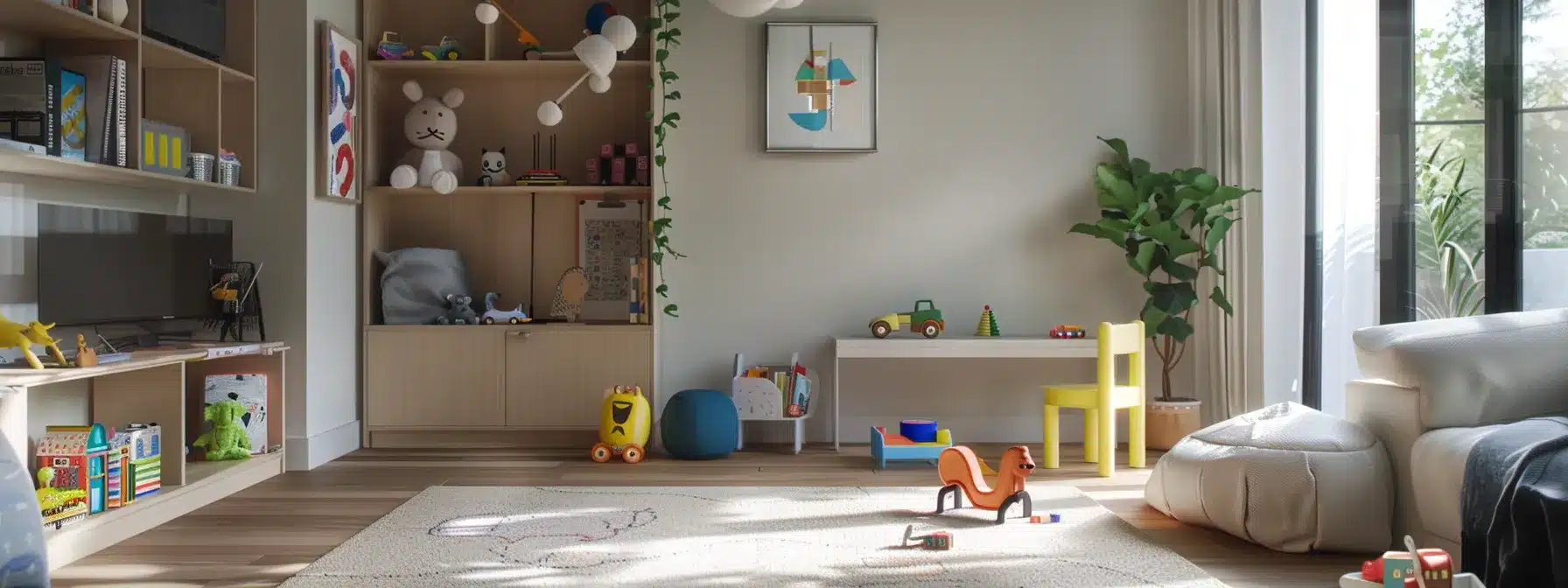
The realm of childproofing has embraced technological advancements, offering parents sophisticated tools to safeguard their little ones from electrical hazards. These cutting-edge solutions go beyond traditional outlet covers and cord management, incorporating smart features and wireless technologies. From intelligent outlets that detect and prevent unauthorized access to cordless appliances that eliminate tripping hazards, modern homes can now be equipped with an invisible shield of protection. These innovations not only enhance safety but also seamlessly integrate with contemporary lifestyles, providing peace of mind without sacrificing convenience or aesthetics.
Overview of the Latest Childproofing Technologies
Smart outlet covers have revolutionized childproofing efforts in modern homes. These devices use sensors to detect when a child attempts to insert an object, automatically blocking access. Some models even send alerts to parents’ smartphones, providing real-time monitoring of potential electrical hazards.
Wireless charging pads eliminate the need for exposed cords in many areas of the home. By incorporating these devices into furniture or designated charging stations, parents can reduce the risk of children tampering with traditional power cords. This technology not only enhances safety but also contributes to a cleaner, more organized living space.
Voice-activated smart home systems offer an additional layer of protection for curious children. Parents can use voice commands to control outlets, turn off power to specific areas, or receive notifications about unusual electrical activity. These systems integrate seamlessly with other smart home features, creating a comprehensive safety network:
- Motion-activated outlet covers that close when not in use
- Smart power strips with individual socket control via apps
- Cordless appliances with rechargeable batteries
- Outlet timers to restrict power access during certain hours
- AI-powered cameras for monitoring electrical hazards in children’s play areas
How Smart Outlets Can Enhance Child Safety
Smart outlets revolutionize child safety by incorporating advanced sensors and connectivity features. These devices can detect when a foreign object attempts to enter the outlet, automatically shutting off power to prevent electrical shock. Some models even send real-time alerts to parents’ smartphones, allowing for immediate response to potential dangers.
Customizable access control enhances the safety features of smart outlets. Parents can set schedules to disable specific outlets during certain hours, reducing the risk of nighttime accidents or unsupervised use. This feature proves particularly useful in playrooms or bedrooms where children spend significant time unsupervised.
Integration with home automation systems further extends the protective capabilities of smart outlets. Voice commands can instantly cut power to designated areas, while geofencing technology can automatically engage child safety features when young ones are detected nearby. These interconnected solutions create a dynamic, responsive environment that adapts to the changing safety needs of growing families.
Investing in Cordless Appliances: A Worthwhile Consideration?
Cordless appliances offer a significant safety advantage in homes with young children. These devices eliminate the risk of tripping over cords or accidental strangulation. Battery-powered vacuums, lamps, and small kitchen appliances reduce electrical hazards while maintaining functionality.
While the initial investment in cordless appliances may be higher, the long-term benefits often outweigh the costs. Improved safety, increased mobility, and reduced energy consumption contribute to their value. Parents should consider the specific needs of their household and the areas where cordless options would provide the most significant safety improvements:
As technology advances, the performance and battery life of cordless appliances continue to improve. This trend makes them an increasingly practical choice for safety-conscious families. By strategically incorporating cordless options into high-risk areas, parents can create a safer environment without sacrificing the conveniences of modern living.
Technology safeguards our homes, but it can’t replace a child’s understanding of danger. Let’s explore how to empower kids with knowledge that keeps them safe beyond the walls of our high-tech fortresses.
Educating Your Child: The Role of Awareness in Safety
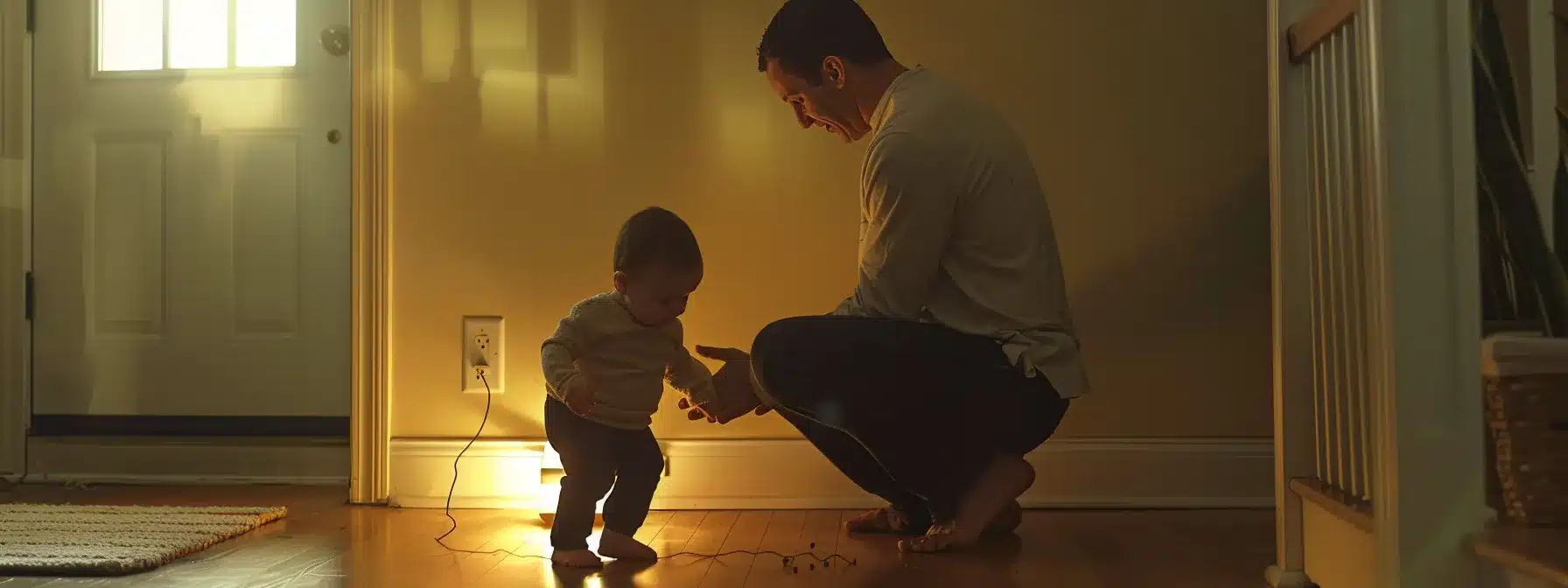
Teaching children about electrical safety forms a crucial part of creating a secure home environment. While physical childproofing measures are essential, educating young ones about the potential dangers of outlets and cords adds an extra layer of protection. By tailoring lessons to different age groups, establishing clear household rules, and consistently modeling safe behavior, parents can empower their children to recognize and avoid electrical hazards. This comprehensive approach not only reduces the risk of accidents but also fosters a culture of safety awareness that children can carry with them as they grow.
Age-Appropriate Lessons on Electrical Safety
Teaching toddlers about electrical safety requires simple, clear messages. Parents can use phrases like “no touch” or “ouch, hot” to convey the danger of outlets and cords. Colorful picture books or songs about electrical safety can help reinforce these concepts in a fun, engaging way.
Preschoolers and early elementary students benefit from more detailed explanations. Parents can demonstrate proper plug usage and explain why water and electricity don’t mix. Role-playing scenarios, such as what to do if they see a frayed cord, help children practice safe behaviors in a controlled environment.
Older children and preteens can handle more complex information about electrical safety. Discussions about how electricity works, the importance of circuit breakers, and basic first aid for electrical burns become appropriate. Encouraging them to help with safe cord management or to report potential hazards fosters a sense of responsibility and reinforces safety habits.
Creating Rules and Reminders Around the House
Establishing clear household rules about electrical safety helps children understand boundaries and expectations. Parents can create simple, easy-to-remember guidelines such as “Ask an adult before plugging in” or “Keep drinks away from cords.” Posting these rules in visible locations reinforces their importance and serves as a constant reminder for the whole family.
Visual cues play a crucial role in maintaining awareness of electrical safety. Families can use colorful stickers or signs near outlets and appliances to remind children of potential dangers. These visual prompts, combined with verbal reminders, create a consistent message about safe practices throughout the home.
Regular family discussions about electrical safety keep the topic fresh in children’s minds. Parents can use everyday situations, like charging a device or using a new appliance, as teachable moments to reinforce safety rules. This ongoing dialogue helps children internalize safety practices and apply them in various settings, both at home and elsewhere.
The Impact of Supervising and Modeling Safe Behavior
Parents play a crucial role in shaping their children’s attitudes toward electrical safety through supervision and modeling. By consistently demonstrating safe practices, such as unplugging appliances by gripping the plug rather than yanking the cord, adults set a powerful example. Children naturally mimic their parents’ behavior, making these everyday actions an effective teaching tool.
Active supervision during electrical activities reinforces safety lessons and prevents accidents. When children help with tasks involving electricity, such as plugging in holiday lights or using kitchen appliances, parents can provide hands-on guidance. This approach allows children to learn proper techniques under controlled conditions, building confidence and competence.
The impact of consistent modeling extends beyond the home environment. As children internalize safe behaviors, they become more likely to practice them in other settings, such as school or friends’ houses. This ripple effect of safety awareness contributes to a broader culture of electrical safety, potentially influencing peers and reducing risks in various environments.
Awareness lays the foundation, but action solidifies safety. Let’s explore how regular maintenance keeps your home’s electrical system secure for years to come.
Regular Maintenance: The Key to Ongoing Safety
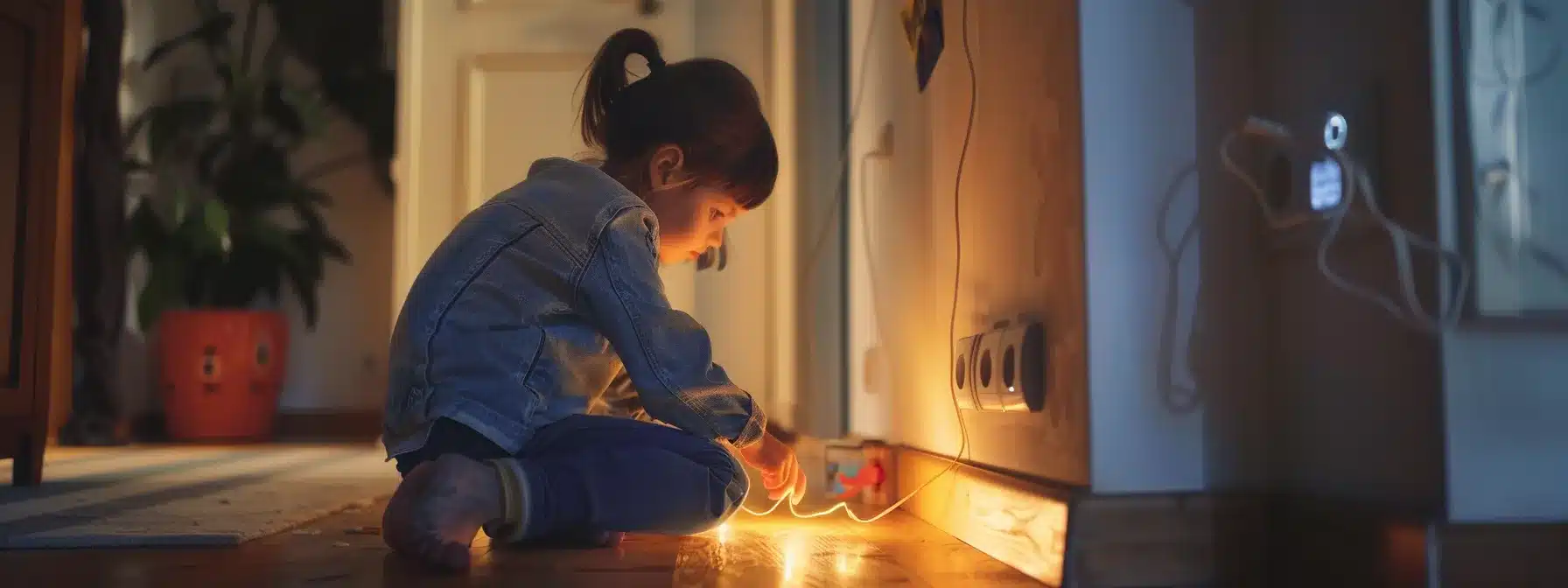
Regular maintenance forms the cornerstone of a comprehensive childproofing strategy for electrical safety. As children grow and explore their environment, the effectiveness of safety measures can diminish over time. Conducting routine checks on outlets and cords ensures that protective devices remain functional and secure. Knowing when to replace or upgrade childproofing solutions is crucial for adapting to changing household needs and emerging safety technologies. Additionally, staying informed about the latest electrical safety standards helps families implement the most current and effective protective measures. By prioritizing ongoing maintenance and education, parents can create a consistently safe environment that evolves with their children’s developmental stages.
Conducting Routine Checks on Outlets and Cords
Regular inspections of outlets and cords form the foundation of ongoing electrical safety in homes with children. Parents should establish a monthly routine to examine all accessible outlets, ensuring covers remain secure and free from damage. This practice helps identify potential hazards before they escalate into serious safety risks.
Cord inspections require careful attention to detail, focusing on signs of wear, fraying, or exposed wiring. Families should check both ends of cords for loose connections or bent prongs, which can indicate unsafe usage. Proper storage and handling of cords between uses can significantly extend their lifespan and maintain safety standards.
Seasonal changes often necessitate additional checks, as holiday decorations and shifting furniture arrangements can introduce new electrical configurations. Parents should conduct thorough inspections after major home events or renovations to ensure all safety measures remain effective. A comprehensive checklist can help streamline this process:
When to Replace or Upgrade Your Childproofing Solutions
Parents should replace outlet covers and cord management solutions when they show signs of wear, damage, or ineffectiveness. Cracked plastic, loose fittings, or covers that children have learned to remove indicate it’s time for an upgrade. Families often find they need more robust solutions as children grow and become more adept at circumventing basic safety measures.
Technological advancements in childproofing gear warrant consideration for upgrades every few years. Smart outlets, tamper-resistant receptacles, and advanced cord concealment systems offer enhanced protection beyond traditional methods. These modern solutions often integrate seamlessly with home automation systems, providing additional layers of safety and convenience.
Significant life changes, such as moving to a new home or welcoming another child, present ideal opportunities to reassess and upgrade childproofing measures. These transitions allow families to implement comprehensive safety strategies tailored to their new environment and family dynamics. Regularly evaluating the effectiveness of current childproofing solutions ensures children remain protected as their abilities and curiosity evolve.
Keeping Up With the Latest in Electrical Safety Standards
Staying informed about the latest electrical safety standards helps families maintain a secure environment for their children. The National Electrical Code (NEC) updates its guidelines every three years, incorporating new technologies and addressing emerging safety concerns. Homeowners should familiarize themselves with these changes to ensure their childproofing measures remain current and effective.
Professional electricians serve as valuable resources for understanding and implementing updated safety standards. Scheduling annual electrical inspections allows experts to identify potential hazards and recommend modern safety solutions. These professionals can also provide insights into local building codes and regulations that may affect home electrical systems.
Online resources and community workshops offer accessible ways for parents to stay informed about electrical safety advancements. Many utility companies and safety organizations provide free educational materials and seminars on childproofing techniques and emerging technologies. By actively seeking out this information, families can create a culture of continuous improvement in their home safety practices.
Conclusion
Childproofing electrical outlets and cords plays a crucial role in safeguarding curious children from potential harm, with statistics showing alarming rates of electrical injuries among young ones. By implementing a comprehensive approach that includes physical barriers, smart technologies, and educational strategies, parents can significantly reduce the risk of accidents and create a secure environment for their families. Regular maintenance and staying informed about the latest safety standards ensure that protective measures remain effective as children grow and explore their surroundings. Ultimately, the investment in childproofing not only prevents immediate dangers but also fosters a lasting culture of safety awareness that children can carry with them throughout their lives.

